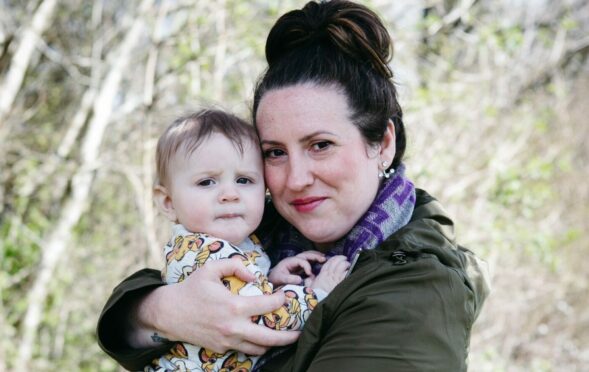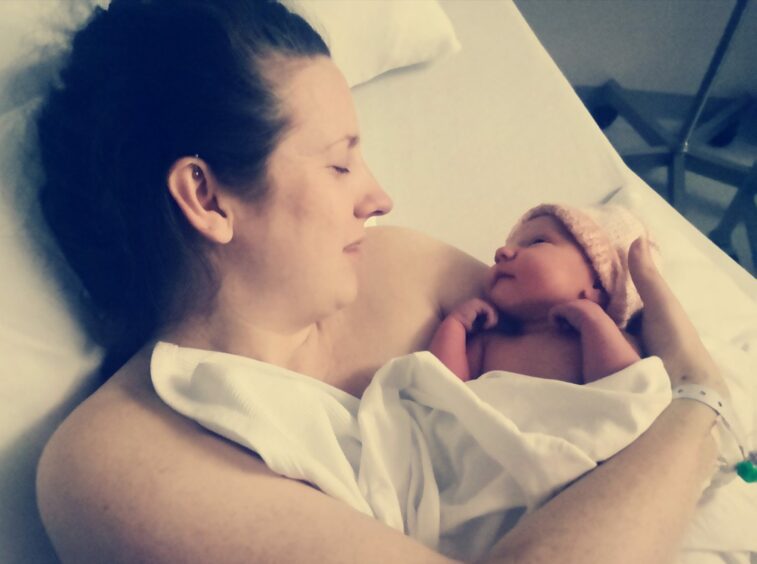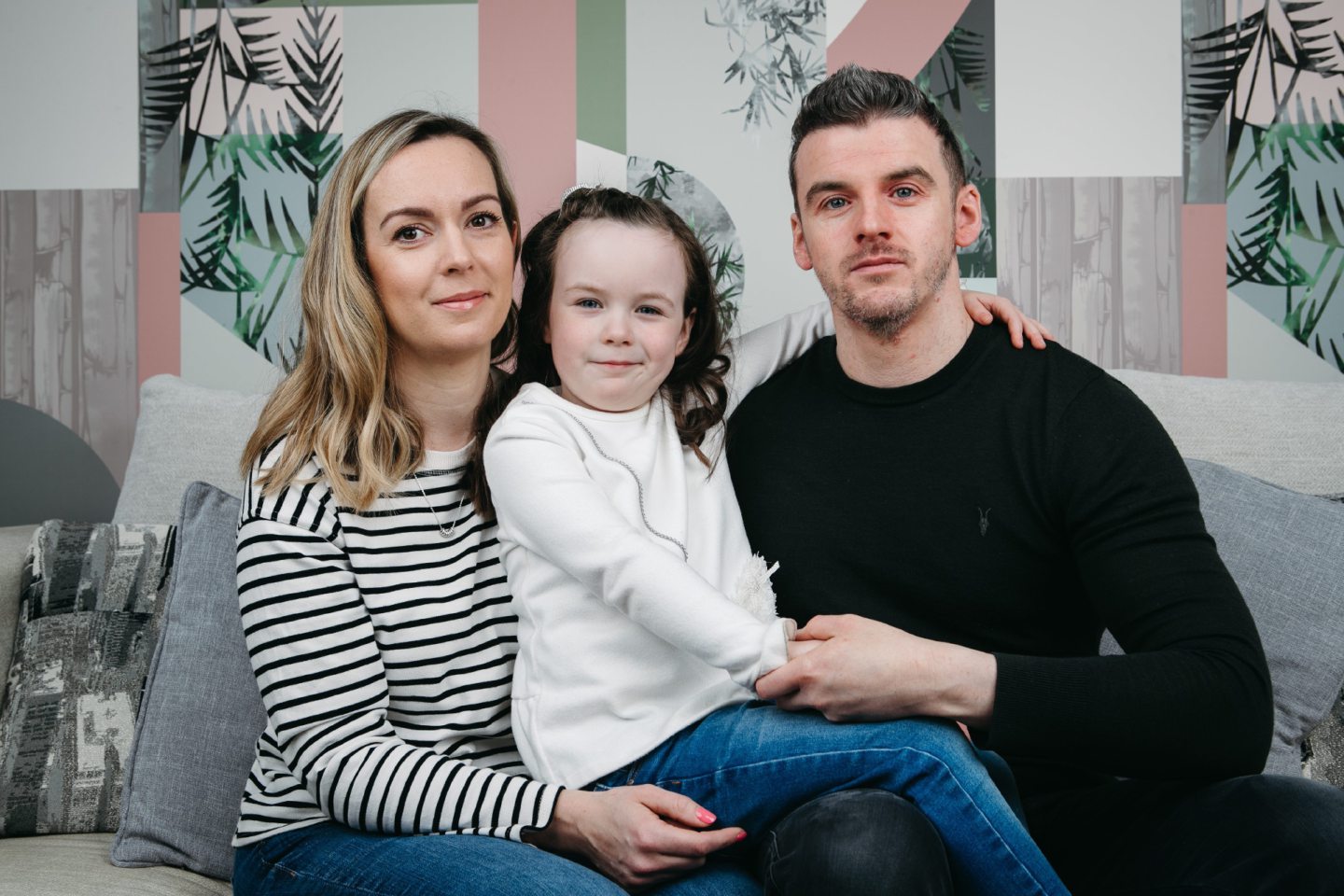
Pregnant women at risk of a life-threatening condition in Scotland are not being offered simple diagnostic tests now available south of the border, we can reveal.
The failure to approve the tests for pre-eclampsia prompted critics to accuse the Scottish Government of a lack of urgency yesterday after promising to improve health care for women.
Eight months ago, ministers announced a Women’s Health Plan and said recruiting a champion for female patients was a “key recommendation” but, we can reveal, the role may not now be filled until 2024.
At the time, ministers boasted Scotland was the first of the UK’s four nations to draft a plan to address a range of health inequalities affecting women but critics say action has failed to follow and progress is far too slow.
Meanwhile, tests to detect pre-eclampsia were approved by the National Institute for Clinical Excellence in England last month, but have yet to be given the go-ahead in Scotland.
Pre-eclampsia can lead to potentially-fatal seizures in mothers and can result in babies being born prematurely, with a risk of brain haemorrhages. The four new tests being offered in England have been hailed as a major advance in early diagnosis.
Dr Kay Kelly: This gender health gap is so dangerous for British women
Around 1,000 babies die each year in the UK after their mothers develop pre-eclampsia.
The condition affects 65,000 women a year and professor James Walker, who pioneered treatment for pre-eclampsia when he worked at Glasgow Royal Maternity Hospital, said he cannot explain why the tests are not being offered to Scots women.
The obstetrician, who investigates poor pregnancy outcomes, said: “Scotland has always been resistant to offering mothers what is a vital part of antenatal care. I do not know why, because it saves lives and is cost effective. It is simply good logic.
“For a few pounds you can spare a mother and baby a lot of heartbreak. Those who are detected late are admitted to hospital at a cost of around £400 or more a day.” The emeritus professor of obstetrics at Leeds University added: “Babies born prematurely often have to undergo long arduous spells in neonatal paediatric intensive care or are born too young to survive. Prematurity brings the risk of potential brain damage for babies.”
The condition is signalled by a rise in blood pressure and doctors intervene with anti-hypertensive drugs. However, early diagnoses with the screening, called the placental growth factor (PLGF) test, allows obstetricians to move fast to treat mothers and their babies earlier.
A 2020 Scottish Parliament debate on the value of the test acknowledged that it cut the rate of serious maternal complications before birth such as eclampsia and stroke from 5.3% to 3.8%. About 10% of expectant mothers suffer high blood pressure in pregnancy and 25% of those run into problems.
Walker said: “The best treatment is always to pick up pre-eclampsia early with testing.”
The Scottish Government last week said NHS boards in Scotland could offer the PLGF tests, now approved in England, if they wanted. However, when contacted, 11 of the 14 boards said they did not offer the test, with most waiting for national guidelines. Three did not respond.
Marcus Green, chief executive officer of campaigning group Action on Pre-eclampsia, is calling on the Scottish Government to make PLGF tests available for all mothers who need them.
He said: “The results of the PLGF testing have been overwhelming successful and there is very clear medical evidence that it works. The new draft guidelines from Nice are clear they understand the need for the test. Wales has now also promised to introduce it.
“Buying it privately is not helpful because this is a clinical tool, used with other tests to assess the mother and baby’s health during pregnancy. It tells whether in the next fortnight they will develop pre-eclampsia.
“It is also cost-effective and much cheaper than treating mothers and babies in hospital should they suffer complications of pre-eclampsia.”
Conservative MSP Miles Briggs lobbied for the introduction of the test in Scotland last year and will urge ministers to act now: “We are talking about making pregnancy safer for women and reducing the risk of the dangers of premature births. I am aware that some mothers are buying access to the test privately when it should be available to all expectant mothers through the NHS.
“The promise to appoint a Woman’s Heath champion is just something else that may be kicked into the long grass.”
A Scottish Parliament debate on the value of the PLGF test in March 2020 acknowledged it was not available in Scotland, although it was in the majority of hospital trusts in England.
It also noted that it improved patient safety and reduced demand on maternity services through early detection and treatment.
The independent Nice diagnostic advisory committee recommended four tests that could be used between 20 to 36 weeks of pregnancy “to help make decisions about caring for women presenting with suspected pre-term pre-eclampsia”. The Scottish Government launched its Women’s Health Plan, which included 66 recommendations on how to improve the health of Scotland’s women.
Seven key recommendations were flagged up – with the Scottish Government boasting it was the first in the UK to have such a plan – but little progress seems to have been made.
The recommendations included the appointment of a national Women’s Health Champion, a process the Scottish Government now says could take up to three years.
Meanwhile, of the health boards who replied to our inquiries, only three have so far appointed Women’s Health Leads. Work also has yet to begin on establishing a Women’s Health Fund, while the government says a central platform for women’s health information on NHS Inform will be launched this spring.
On the planned menopause and menstrual health workplace policy, a working group has begun work, with the policy to be introduced by September 2024.
The lack of progress and failure to offer the new pre-eclampsia test was criticised by experts and senior politicians.
Scottish Labour health spokesperson Jackie Baillie said: “Women’s health has been overlooked and ignored for far too long – and this SNP government is not doing enough to get to grips with the situation. On promise after promise, the SNP have failed to put their money where their mouth is and have let the women of Scotland down. We need action, not words from the Scottish Government.”
Scottish Liberal Democrats leader Alex Cole-Hamilton said: “The Scottish Government are proving sluggish at delivering on these promises.
“They need to give the issue of women’s health some real impetus. There’s no good reason why appointing a national women’s health champion should take three years. From perinatal mental health to care in remote and rural communities, Scottish Liberal Democrats will continue to press the government to take action on women’s healthcare.”
The Scottish Government said: “Women’s Health is key priority for this government, which is why we published our ambitious Women’s Health Plan in August 2021.
“Scotland is the first country in the UK to publish a Women’s Health Plan. The aim of the Plan is to reduce inequalities in health outcomes for women, and to improve information and services for women.”
On the plan’s other key actions, it said all community pharmacies had been given the authority to prescribe bridging contraception; a Women’s Heart Health campaign has been launched; research has been carried out by Endiometriosis UK and a new treatment programme for the condition has been developed and is awaiting approval. It said a progress report would be published this autumn. On pre-eclampsia tests, it said: “The Scottish Government is keen that women receive high-quality, safe care including in the diagnosis, prevention and treatment of pre-eclampsia.
“We continue to work with the Perinatal Network to examine the adoption PLGF testing for pre-eclampsia in Scotland and will learn from its roll out in NHS trusts.”
All women deserve to know the risks and get access to pre-eclampsia test
Mum-to-be Lynsey Gate was worried when her hands began to swell but was reassured by a midwife who suggested it was a common quirk of pregnancy.
Instead, Lynsey, 40, from Falkirk, was showing the first signs of Hellp (hemolysis, elevated liver enzymes and low platelets) syndrome, a complication linked to
pre-eclampsia which affects the mother’s liver and can potentially be fatal if not diagnosed early.
She recalled: “My hands swelled at 32 weeks and I became ill with agonising pain in my right side, and vomiting. I went to hospital even though my midwife had assured me there was nothing wrong. I was kept in and treated until my baby Esme was born four weeks early. She was treated in the neonatal intensive care unit.”
Lynsey has called for improved care of women with pre-eclampsia, including earlier diagnosis, while she highlighted the confusion caused by the condition’s name change.
At her first antenatal visit she was asked if there was a family history of
pre-eclampsia but because her mum had known and experienced the condition as toxaemia – its former name – she was unaware she was at risk. “All women deserve to know the risks and be given access to the test for pre-eclampsia and nothing should be lost in confusion over old names for dangerous conditions,” said Lynsey.
“I am lucky to be alive but only because I pushed for a diagnosis. It took months for me to recover. This is the 21st Century and we cannot have a patchwork quilt of healthcare where some get vital diagnostic tests, and others do not. A couple of months after giving birth an MRI scan showed I have been left with signs of liver damage and I have pain every day in my right side around my liver, possibly connected to having had Hellp syndrome.”
Lynsey has since given birth to Esme’s younger brother. She said: “I have had a second baby with close monitoring and, when my blood pressure did rise towards the end of the pregnancy, doctors decided to induce me at 38 weeks with my son Caden.”
I rushed to hospital after routine visit from midwife
Soaring blood pressure was the first sign Lauren Crilley was suffering pre-eclampsia, 34 weeks into pregnancy. She was rushed to intensive care to protect her health and ensure her daughter was born safely.
Lauren said: “A routine visit to my midwife revealed my blood pressure had soared to 213 over 136. She told me to go to hospital immediately to seek medical help from my consultant obstetrician. Normal blood pressure in pregnancy should not exceed 120/80.
“I had experienced sore heads the previous weekend and my wedding ring was tight but other than that, I was having a good pregnancy.
“Shortly after I arrived at Wishaw Maternity Unit I was given drugs to attempt to lower my blood pressure and steroids to mature Darcey’s lungs and prepare her to survive as a premature baby.
“After she was born, Darcey was rushed to neonatal intensive care where she remained for a week and then she was moved to special care, where she continued to thrive until we left hospital two weeks later. The care for us both was outstanding.”
However, Lauren, from Carluke, Lanarkshire, said her blood pressure did not fall for three months. She was readmitted and given drugs to lower it. “It brought home to me just how dangerous pre-eclampsia is for both mothers and their babies,” she added.
“My husband Christopher has fundraised for charities who campaign for the PLGF test to be available to every pregnant woman.
“It has been given the go-ahead in England and should be automatically available to every expectant mother at risk in Scotland, and indeed the rest of the world.
“Around 1,000 babies die in the UK every year because their mother develop pre-eclampsia.”

Enjoy the convenience of having The Sunday Post delivered as a digital ePaper straight to your smartphone, tablet or computer.
Subscribe for only £5.49 a month and enjoy all the benefits of the printed paper as a digital replica.
Subscribe © SYSTEM
© SYSTEM © SYSTEM
© SYSTEM © Andrew Cawley
© Andrew Cawley